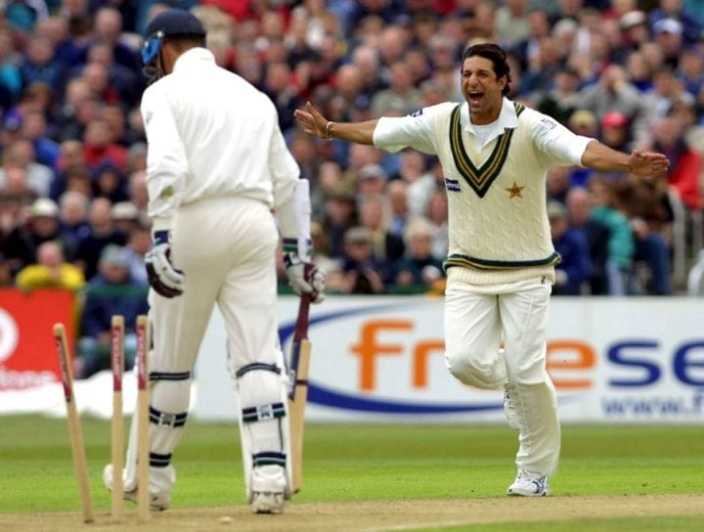Their actions might differ, but the results are the same – no batter feels safe when they are bowling.
The dread began with him at the top of his mark. It intensified as he ran in, manifesting as a knot in the stomach. Fingers were crossed and prayers whispered that the next few seconds would pass without his quick turn and confident appeal – arms aimed at the sky, fingers splayed, ready to be high-fived. Or that spirited celebratory run after disarraying stumps, fists clenched, another batter done.
It felt like even Sachin Tendulkar was especially careful against him (only four dismissals in 31 internationals) to the extent that he took more chances against, and became susceptible to, mortals like Abdur Razzaq and Ata-ur-Rahman.
He knocked out Rahul Dravid with that 1-2-3 combo. Two inswingers (the bowling gods refused him the lbw with the first one so that we could witness that third ball) and an unearthly one that shimmied and shook past the most reliable defence in the game to kiss off stump.
He was easy to enjoy when he wasn’t playing India. A World Cup was headed England’s way until he took two in two balls. Hat-tricks were wondrous, rare things before T20 cricket made them humdrum, and he took two inside two weeks against Sri Lanka. When he had the ball, white or red, old or new, in Asia or anywhere, it seemed like no batter was safe.
A few decades later, this ’80s-’90s Indian kid now knows what it must have felt like to have Wasim Akram play for your side.
Jasprit Bumrah has a way to go to get near Akram’s body of work (419 international wickets against 916) and he may never do so, although his averages – almost every way you dice them – are right up there. But right here, right now, when Bumrah has the ball, white or red, old or new, in Asia or anywhere, no batter seems safe.
Akram bowled left-handed while Bumrah does with his right, and they are visually so different. But there are similarities: a shortish run-up, a preference to attack the stumps, the ability to produce all sorts – swing, seam, sharp bouncer, sharper yorker – at any point in the game.
Like Akram in 1992, Bumrah returned late in the game to own the 2024 T20 World Cup final. He brings this sense of expectancy at the start of every spell, over, or delivery. Set batters don’t appear so set. The pitch doesn’t seem as benign. The air bristles with something’s-going-to-happen energy.
The Perth Test was a microcosm of the promise Bumrah brings with him every time. India all out for 150? He takes out three in his first four overs and strikes with his first ball the next morning. Ahead by 500-plus, he declares late in the day to make Australia live the nightmare of facing him before stumps, striking in his first over and also removing the batter hiding behind the nightwatcher. Faced with some pesky resistance on day four, he returns and knocks off Travis Head in the first over of his spell.
Akram retired at the age of 36 and remained a force right up until the end. Imagine the possibilities if Bumrah, now nearly 31, can emulate that too.











Leave a Reply